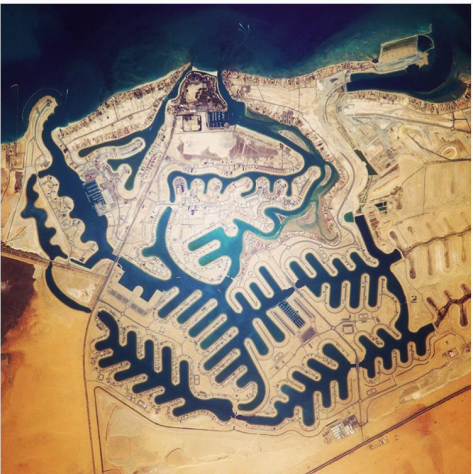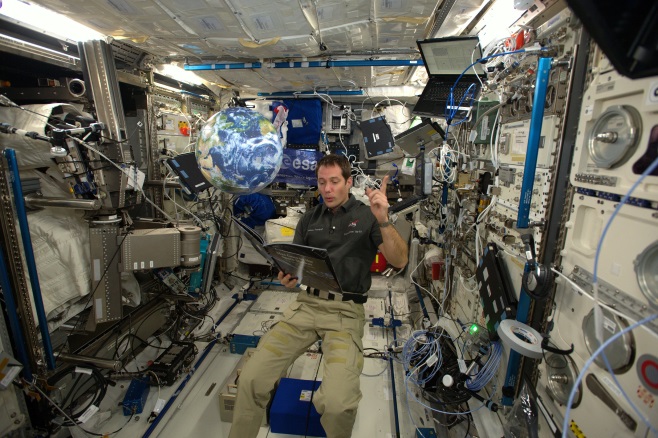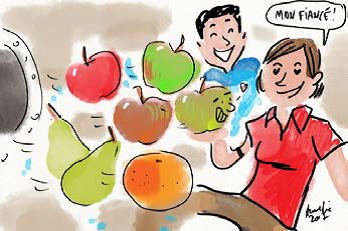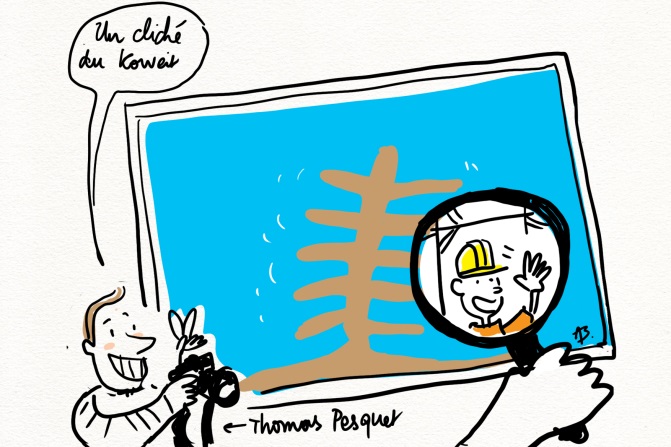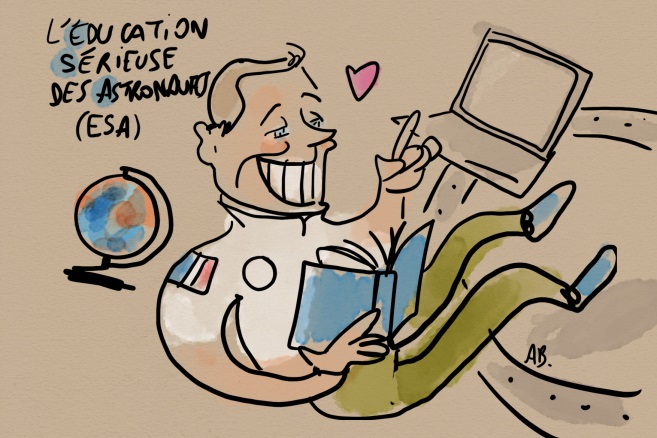Hosted by OSOS , contributed by Laurianne on 8 March 2021
Présentation du projet
Encourager les élèves à questionner le monde qui les entoure et à faire travailler son imaginaire en construisant un récit à partir d’une image à thématique astronomie ou espace.
Dans ce projet, les élèves réalisent un documentaire ou une fiction à partir d’une photographie spatiale. Par petits groupes, ils réalisent un court métrage en utilisant des logiciels de montage vidéos, de prise de son et de mise en mouvement de la photographie grâce à l’effet Ken Burns.
L’objectif est, dans le cadre des usages du numérique, de créer une vidéo à partir une image fixe. L’image est explorée et valorisée à l’aide du récit.
L’élève développe son imaginaire et interrogera le monde à partir de l’image scientifique.
Les vidéos sont valorisées dans le cadre du Festival du Livre Jeunesse Occitanie où elles sont présentées au grand public.
Un rassemblement de tous les établissements participants à lieu à la Cité de l’espace. Une dessinatrice scientifique, Aurélie Bordenave, intervient pour illustrer en direct les enregistrements audio des vidéos sélectionnées. L’enregistrement doit être suffisamment descriptif pour permettre à la dessinatrice de saisir et de reproduire la photographie de base sans l’avoir vue au préalable.
Les objectifs d'apprentissage
- Interroger le monde à partir d’une image scientifique
- Transmettre une certaine représentation du monde à travers la formulation de ses opinions et l’expression de sa sensibilité
- Esprit de synthèse
- Comprendre le concept de photo-fiction, photo-documentaire
- Utiliser les outils numériques pour servir le propos
- Storytelling
Possibilité de partenariats

Voici quelques partenariats possibles à considérer pour le développement de votre projet :
| Cité de l'espace |
|
| Le festival du livre Jeunesse Occitanie de St Orens |
|
| Illustratrice scientifique |
|
| Entreprise dans le digital |
|
| Universités ou centres de recherche |
|
| Professeurs |
|
Principes RRI
L'un des aspects clés d'OSOS est l'inclusion des principes RRI - Responsible Research and Innovation (plus d'informations sur RRI-Tools.eu). Voici comment cet accélérateur s'intègre dans le modèle RRI :
Fournir à l'étudiant le contexte et l'information nécessaires Aidez-les à préparer et développer leur projet
| Gouvernance |
C'est à dire : Les élèves questionneront le monde environnant et mettront leur imagination au travail pour produire une histoire basée sur l'astronomie ou l'image liée à l'espace. La photo sera choisie par la Cité de l'espace. Au cours de l'événement final, ils recevront des commentaires d'un illustrateur scientifique qui les fera réfléchir sur leur travail. |
| Engagement public |
Ce projet est basé sur une approche transdisciplinaire et collaborative. Les élèves des groupes doivent comprendre l'image scientifique et raconter une histoire à partir des détails de l'image. Ils reçoivent des commentaires du centre scientifique, d'autres étudiants et d'un illustrateur scientifique. C'est à dire : L'illsustrator scientifique dessine quelque chose basé sur l'histoire qu'elle entend. Ensemble avec les étudiants, ils comparent l'image et le dessin. De cette façon, les étudiants obtiennent une rétroaction directe et peuvent réfléchir à leur histoire. |
| Egalité entre les sexes |
C'est à dire : Les images données aux étudiants sont sélectionnées selon une approche non sexiste. |
| Education scientifique |
Les élèves utiliseront leurs connaissances scientifiques pour comprendre l'image et ensuite écrire leur histoire. Ils auront une approche scientifique pour comprendre l'image qu'ils choisissent. Ils devront développer un état d'esprit analytique pour comprendre l'image et écrire l'histoire en fonction de celle-ci. C'est à dire : Le travail des étudiants sera présenté lors d'un festival du livre, de cette façon les étudiants pourront partager leur travail avec le grand public. Ils peuvent sensibiliser le public à la problématique scientifique. |
| Ethique |
Les étudiants partageront la responsabilité du projet, en conformité avec l'intégrité de la recherche et les valeurs sociales de la science. C'est à dire : Ce projet aidera l'élève à réfléchir sur son travail et sa façon de communiquer. Si ils communiquent bien leur travail basé sur la science, l'image et le dessin de l'illustrateur scientifique auront de fortes similitudes. |
| Accès libre | De nombreuses photos scientifiques ou spatiales sont disponibles gratuitement en ligne. |
Ressources nécessaires
- Photos scientifiques
- Ordinateur avec une connexion Internet
- Logiciel
- Audacity pour l'enregistrement vocal
- Phtorécit 3 ou ffdiaporama pour améliorer l'image
Organisation en charge de cet accélérateur
Cet accélérateur a été développé par Laurianne Palin et Christophe Chaffardon de la Cité de l'espace.
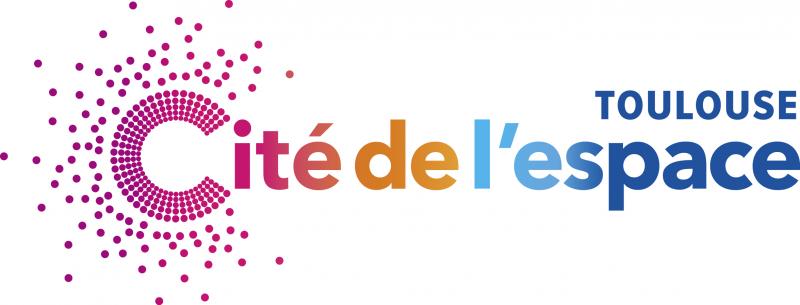
Laurianne Palin - l.palin@cite-espace.com
Christophe Chaffardon - c.chaffardon@cite-espace.com
La Cité de l'espace - Avenue Jean Gonord - Toulouse - France
Se sentir
Addressed challenge : Encourage students to question the surrounding world and put their imagination at work to produce a story based on astronomy or space related picture.
Everyday, we get a lot of information from different sources. Students need to understand them and sort them out to know if they can be trusted or not. In this project, they will question the surrounding world, put their imagination at work, and train their communication skills. They imagine a story based on a scientific picture. A scientific illustrator draws based on the picture she hears. Together, the student and the scientific illustrator compare the picture and the drawing. If they communicate efficiently, the initial picture and the drawing from the scientific illustrator will have strong similarities.
In this section, students have to understand what depicts the scientific picture they chose .
Session 1 - Expected time: 90 minutes
- Students choose one of the three photos offered
- Students do a documentary research about this iconographic document
For example:
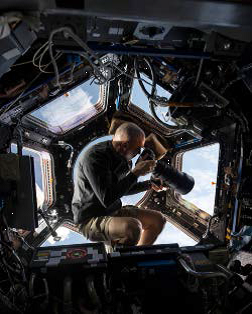
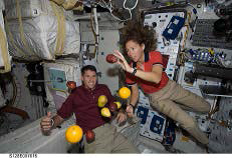
Left : In the Cupola : The Nasa engineer Chris Cassidy uses a 400 mm lens on a digital camera to photograph the Earth about 250 miles below the International Space Station (ISS). (Photo credit : NASA)
Right : The astronauts Shane Kimbrough and Sandra Magnus, 2 specialists of mission STS-126, have fun with free floating fruits in the spatial shuttle Endeavour. (Photo credit : NASA)
Needs: Scientific photos / Computers with access to internet
Imaginer
In this section, students have to imagine the context of the picture they have to base their story on, and imagine the story.
Session 1 - Expected time: 90 minutes
Students produce with the help of their teacher a documentary or a fiction based on the chosen image. They can work in group (3 or 4 students each group)
Needs: nothing special
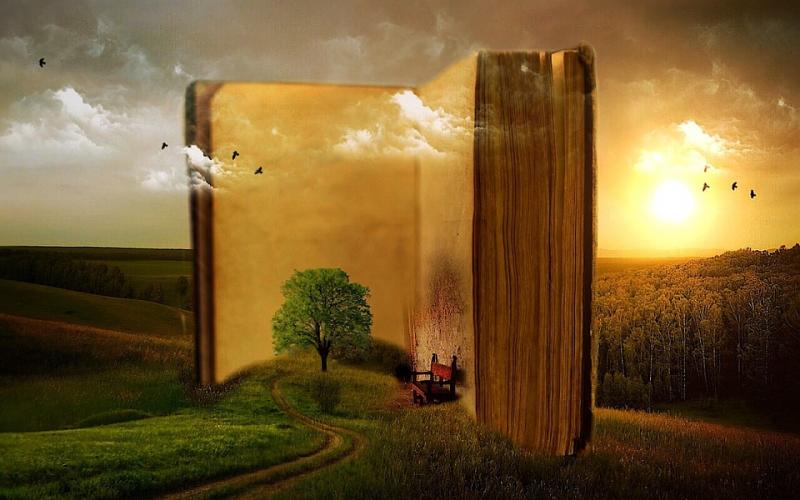
Session 2 - Expected time: 90 minutes
Students write a story based on the details of the photo. The duration of this text/story should be between 1 minute and a maximum of one minute and a half.
Student can help by a university student.
Needs: nothing special
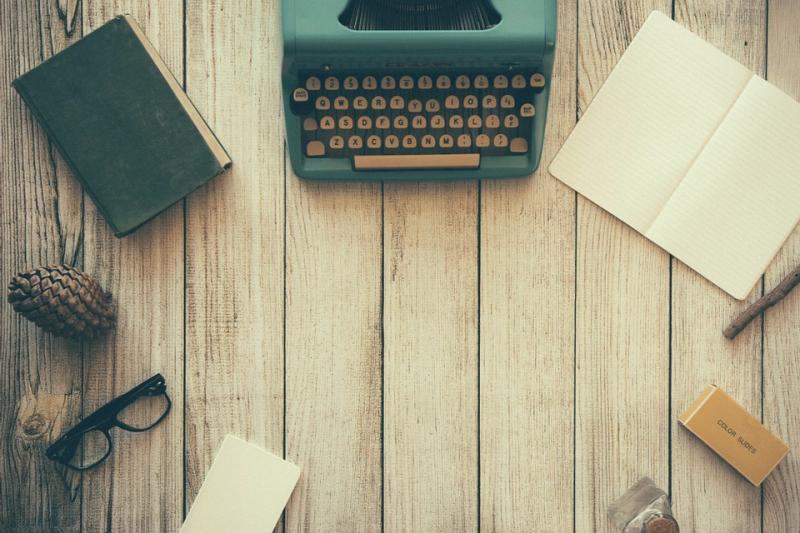
Créer
In this section, students have to record their story and transform the inital picture in a movie using Ken Burn's effect.
Session 1 - Expected time: 90 minutes

- Students develop a digital object: they recorded their voices with Audacity or directly in Photorécit 3 and use the appropriate sounds.
- Students create a digital scipt using Photorécit 3 or ffdiaporama to product a “zooming” and “unzooming” effect on the photo chosen to show a remarkable detail (Ken Burns’s effect). These details will be elements for their story or for the progression of their documentary.
Needs: Computers with access to Audacity and ffdiaporama or Photorécit 3 software
Session 2 - Expected time: 90 minutes

Students and teacher will edit their projects: they combine and adjust the soundtrack and the camera position (they change the timing of the elements of the video sequence to choose an adequate moment to read the story).
Needs: Computers with access to Audacity and ffdiaporama or Photorécit 3 software
